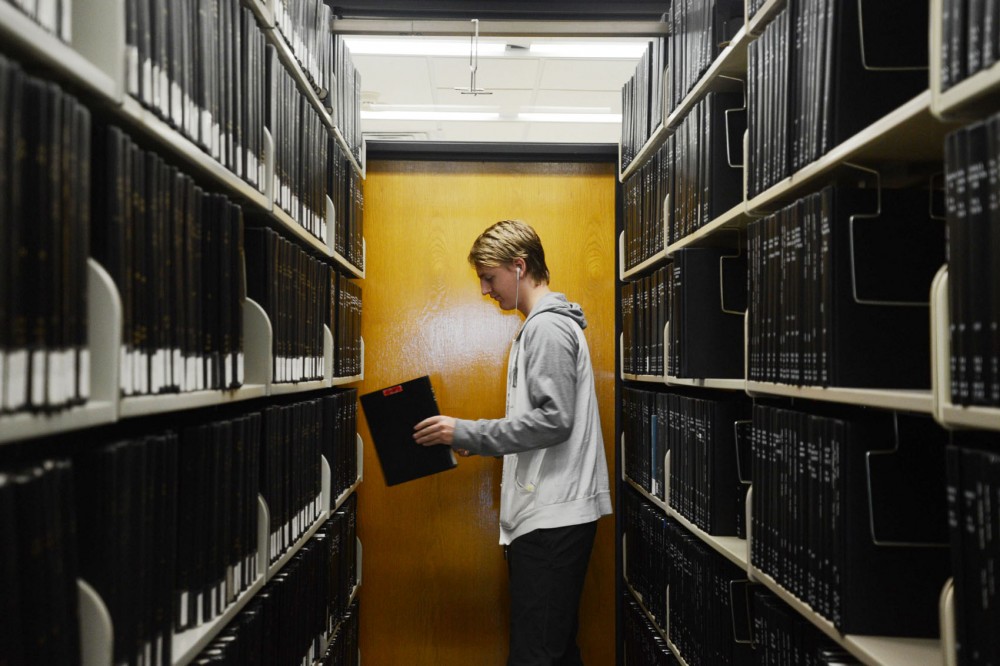University of Minnesota libraries are trying to be nimble and prove their value in the face of shifting funds and changing student needs.
Over the past few years, the libraries have experienced various budget cuts. And in the upcoming fiscal year, they may face a substantial shortfall in the funding to sustain their published content and collections.
But despite budget issues and an increasingly digitized society that doesn’t always recognize the library’s role, the University’s library staff and school leaders continue to stress their importance to the institution.
University librarian Wendy Lougee said the libraries have received some type of yearly budget cut over the last few years, pushing staff to develop new strategies for managing resources.
For example, a few years ago, the University combined two branch libraries on the St. Paul campus to reduce costs, she said.
While the libraries aren’t the only part of the University that’s had to face administrative cuts, they’ve always been in a particular bind because of increasing costs attributed to inflation, specifically for content and collections, Senior Vice President for Academic Affairs and Provost Karen Hanson said.
The libraries’ collections have one of the highest inflation rates of any sector in the University because of factors like licensing dues, Lougee said.
Because a majority of the content bought for the collections is digital, a large portion of the funding goes toward paying the licensing fees, she said. Lougee said about 70 percent of fiscal year 2014’s expenditure was for digital content.
Lougee said the libraries have traditionally received enough funding to cover the cost of inflation, but there may be a shortfall in that funding for 2016.
In the preliminary budget allocations, University Libraries only received $344,950 of its requested $810,500 to sustain and grow collections.
If those allocations are approved, the libraries will have to look at ways of reducing commitments to the collections, Lougee said.
And that may require some areas to take a hit.
“We don’t have a perfect solution,” Lougee said. “But clearly, it’s going to mean buying less.”
Associate University Librarian for Content and Collections Joy Kirchner said because the budget hasn’t been finalized, the libraries are currently examining their resources and evaluating how they would manage any losses in funding.
But while the preliminary recommendation for the collections doesn’t meet the libraries’ full request, they weren’t required to take an overall budget cut like in previous years.
“It’s an interesting dilemma to be in,” Lougee said of the shift in funding.
The University is exploring ways to alleviate certain financial burdens the libraries have, Hanson said, and some of the funds may be reallocated within the unit to sustain commitments to the collections.
She said it’s important to ensure libraries retain the necessary resources for students and faculty.
With the shift toward digital content, Lougee said, services the libraries provide are often overlooked.
But it’s the libraries that provide digital content, among many other services, she said, and it’s important not to forget the role they play in a University setting.
“[The libraries are] really kind of woven into the fabric of what the institution does,” Lougee said.
Hanson said despite change in some of the specific resources the libraries provide, their basic mission within the University has stayed the same.
“Libraries have traditionally [been], and actually in many ways remain, a kind of heart or hub of universities,” she said.











